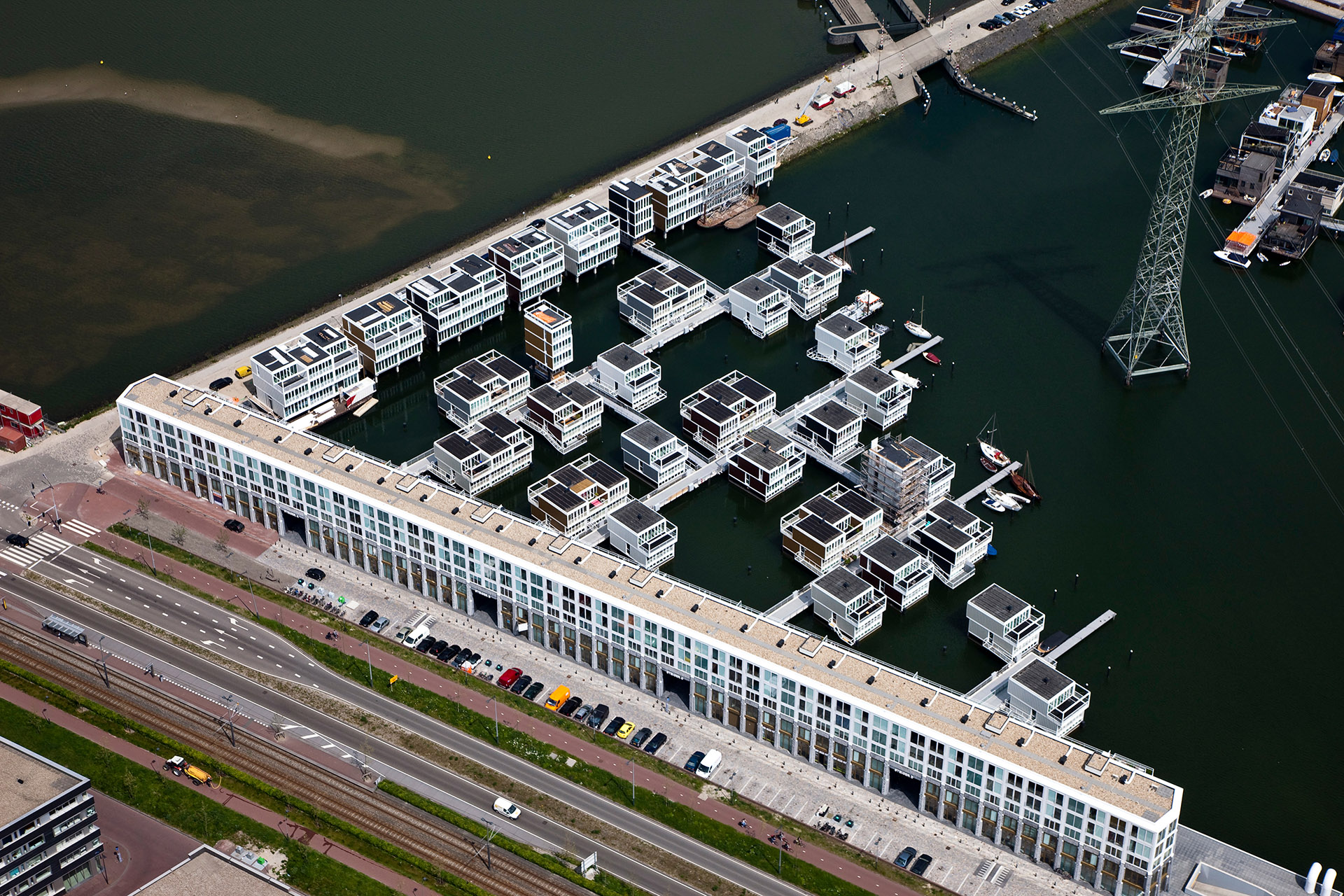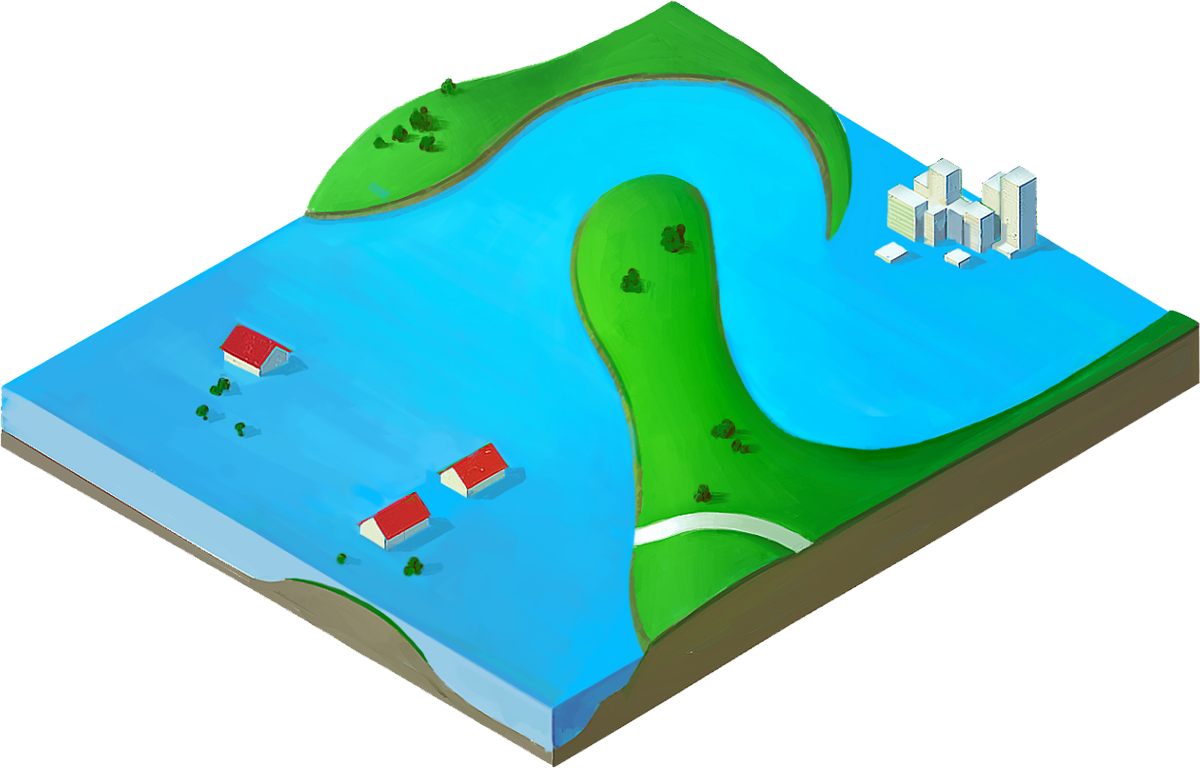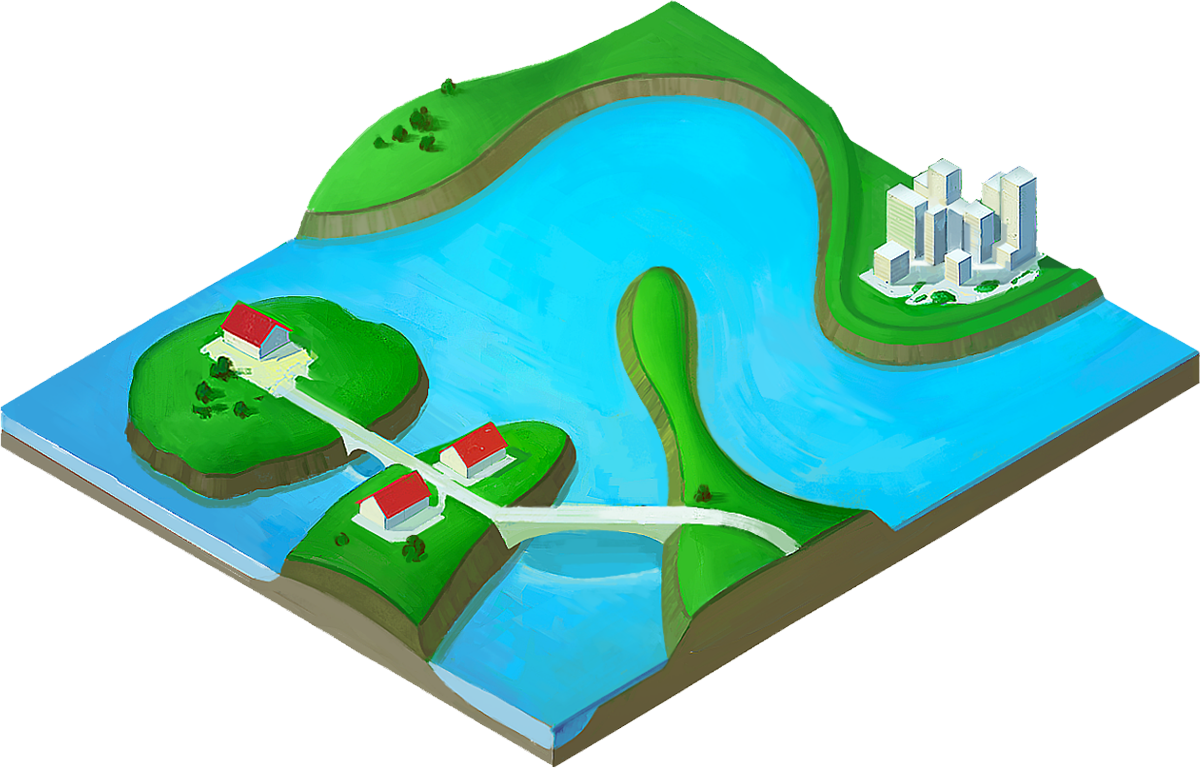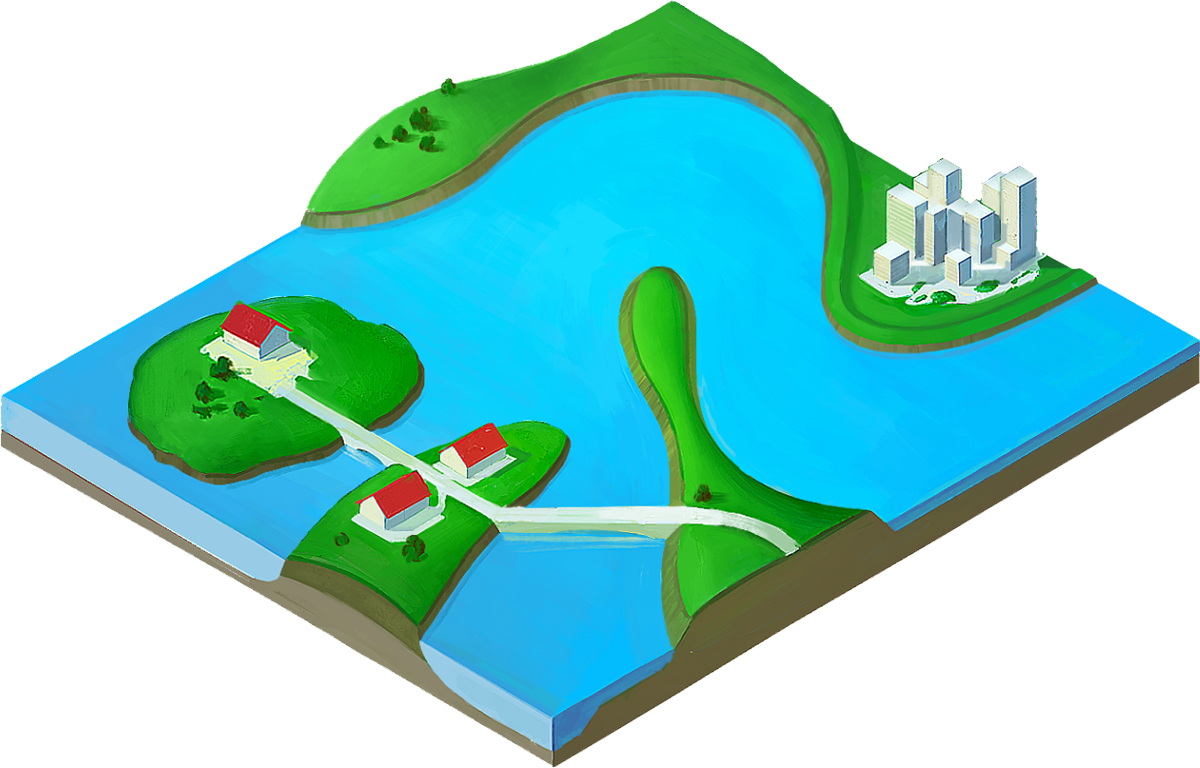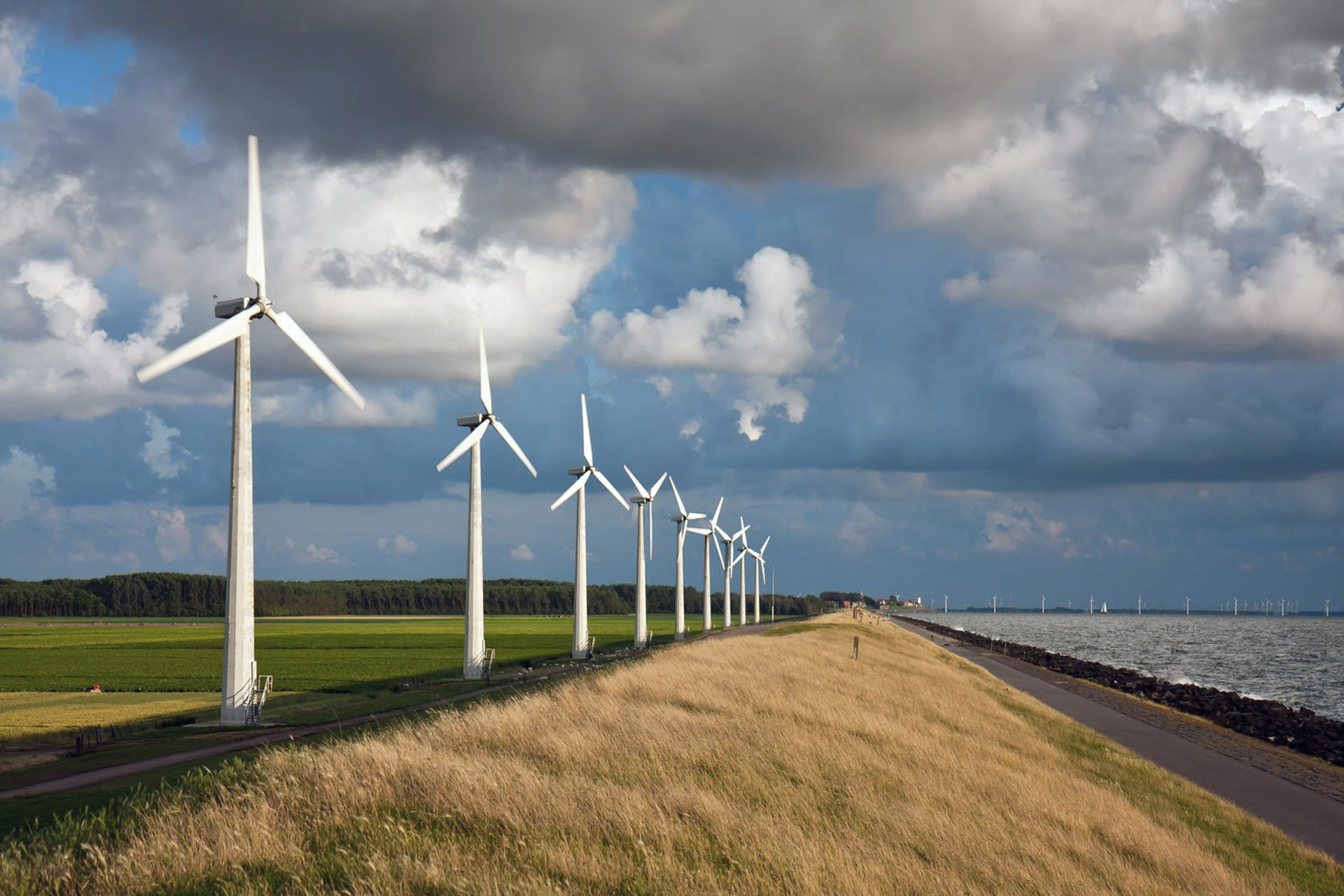
Netherlands
Solutions for a Changing Future
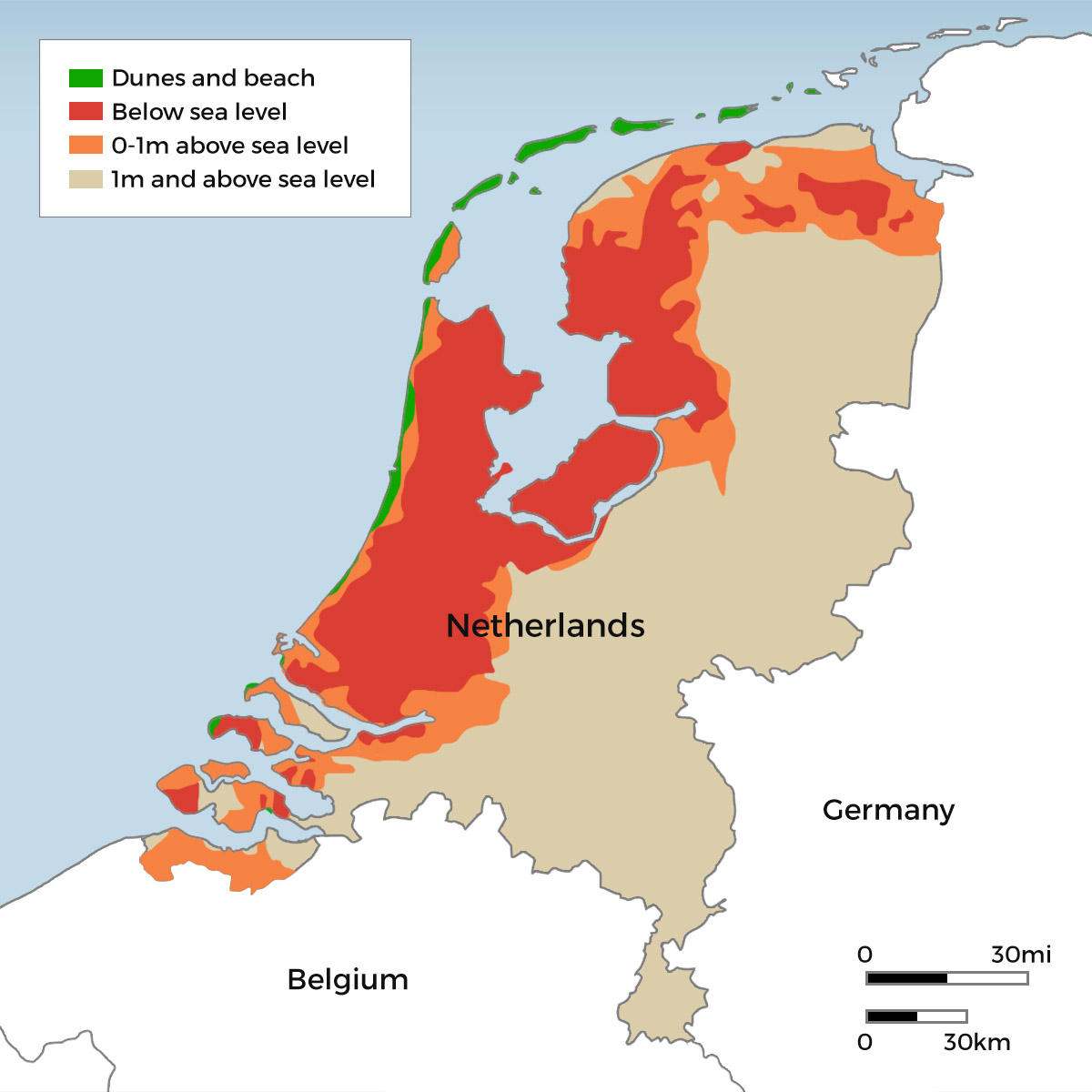
The Netherlands, also known as Holland, is a small nation on the western coast of Europe. Over 17 million Dutch people call the Netherlands home, and millions of tourists visit each year to see the country’s famous tulip fields, windmills, and extensive canal systems.
But this small country has a huge problem. The word “Netherlands” means “the lowlands,” and the landscape certainly justifies its name. Only about 50% of the country’s land is one or more meters above sea level. The rest is at - or below - sea level. This puts the Netherlands at high risk for flooding both from the sea and from the country’s rivers. Global climate change is resulting in rising sea levels. What can the Netherlands do to cope with climate change?
Part of the solution lies in engineering. Dealing with the threat of the sea and rivers has always been an issue for the Netherlands. In fact, the people living here have been managing water flow in this area for over a thousand years. These days about eight percent of a Dutch citizen’s taxes go just toward water management, flood prevention and safety. The Netherlands uses a mix of simple and complex technologies to help protect its citizens from the growing threat of flooding.
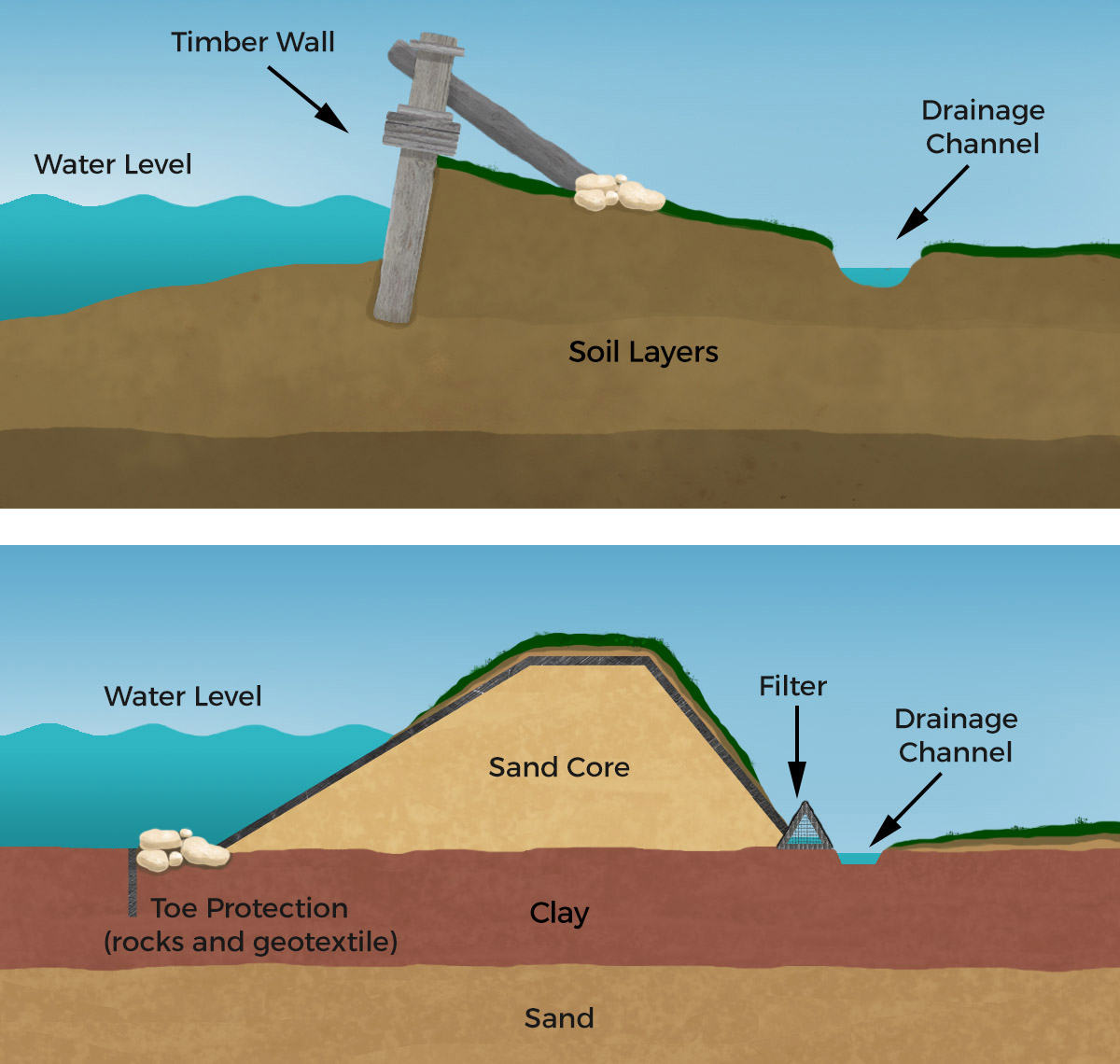
One engineering solution combines centuries-old designs with state of the art technology. Dutch engineers use structures called dikes to hold back water and protect homes and farms. Originally made from rounded piles of earth and other natural materials, modern dikes now incorporate specialized textiles (a type of cloth). Engineers weave these textiles into the dike structure, and they help keep the soil and other materials in place, preventing water from seeping under the dike. Some dikes even have fiberoptic cables threaded through the structure. These cables monitor the level and pressure of rising waters, which helps officials issue warnings and safety alerts to nearby residents.
As part of a Dutch project called Room for the River, officials have expanded the size of the riverbeds downstream from major cities and towns. When a flood occurs, the water now has extra room to flow downstream. The expanded riverbeds prevent floodwaters from backing up in the heavily populated urban areas located upstream. This strategy is similar to dealing with a clogged pipe. If your sink has a clog, water backs up into your sink and may overflow. But if you expand the size of the pipe, the water can flow down the sink quickly and safely, preventing an overflow.
There is one problem with this strategy - many of the downstream areas are filled with homes and farmland. How can the riverbed be expanded without sacrificing people’s homes and livelihoods? The solution has been to create structures called “terps”: long, flat mounds of earth that sit six meters above the waterline. Homes and farms are rebuilt atop the terps. When the river is allowed to flood, the flood waters stay below the level of the terps, which eliminates the need for evacuation and reduces the amount of damage to buildings and farms.
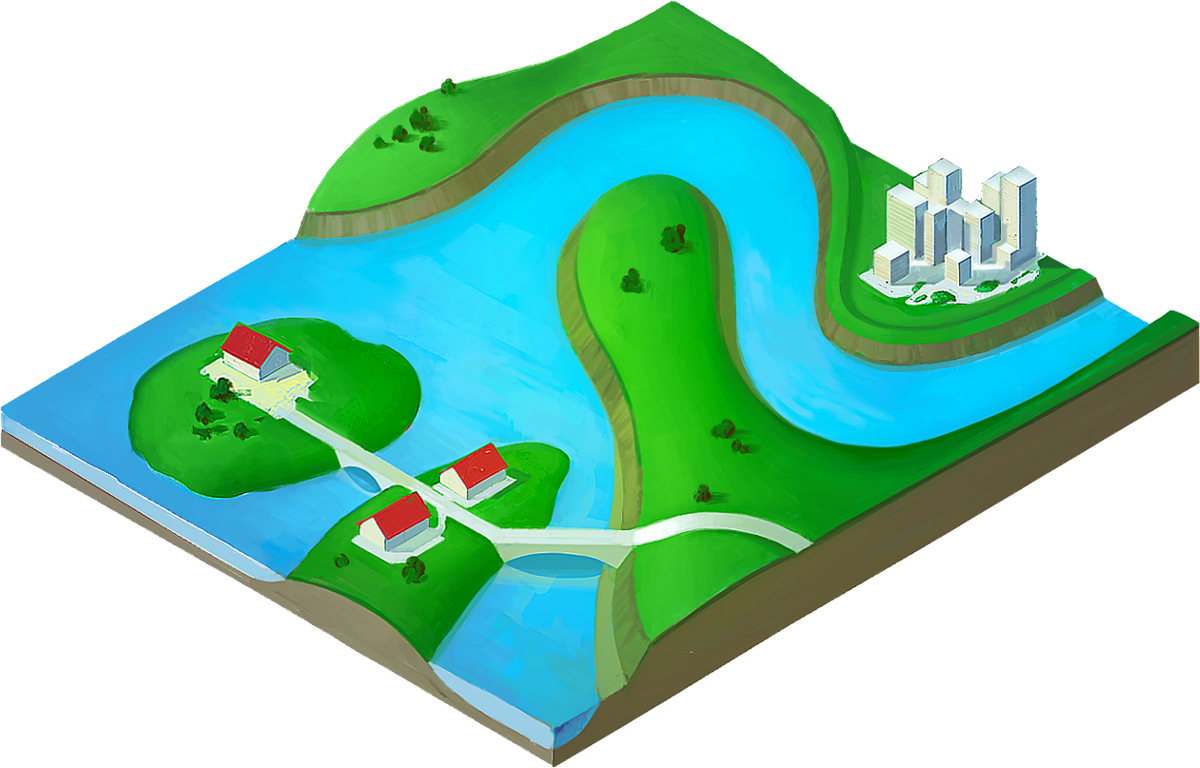
- Flood
- No Flood
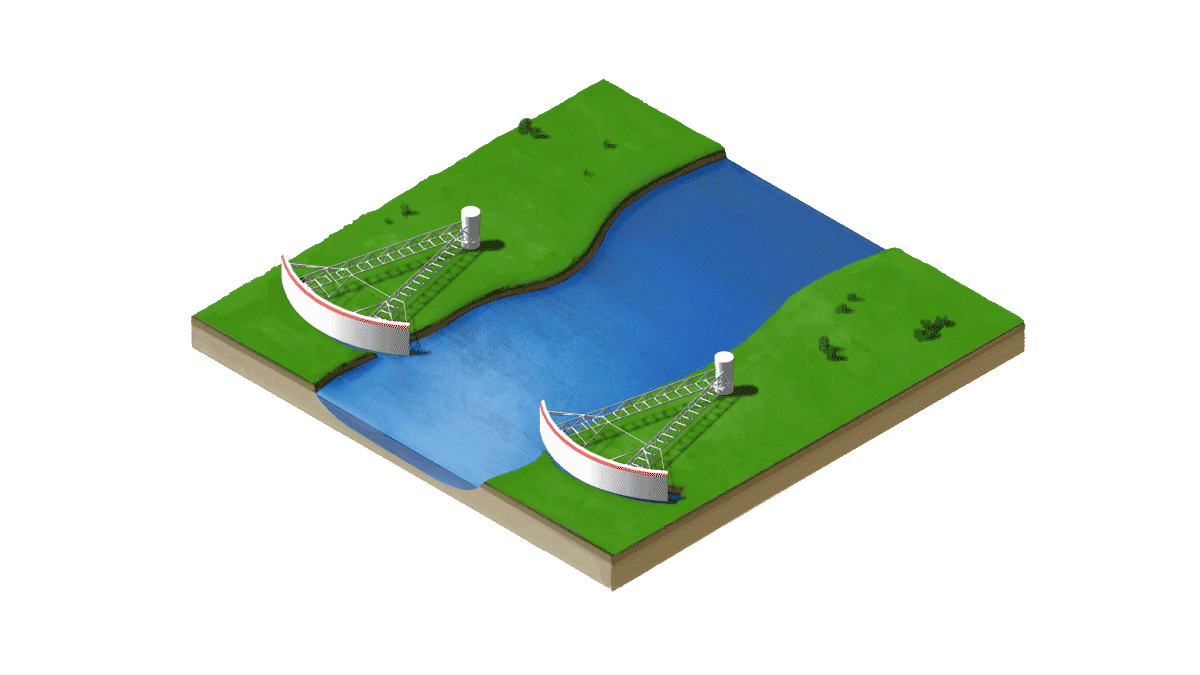
A more complex example of flood management is the Maeslantkering seawall located downriver from Rotterdam, one of the Netherland’s most populated cities. This is a huge, moveable seawall structure that swings into place from trenches built into the riverbank. Maeslantkering is positioned where the river meets the sea in order to prevent storm surge waters from flooding the river. When sea waters rise or a storm surge is predicted, a computer triggers the signal for the seawall to move into place and block the river. First, water floods the trenches that house the arms and the arms begin to float. Then the arms swing into place. Once in place, the arms themselves are flooded with water so they sink into position. The arms can stay in position until the threat of the storm surge subsides.
Engineering isn’t the only strategy the Dutch use to combat climate change. In July 2015, a group of Dutch citizens successfully sued their government to reduce emissions that contribute to climate change by 25% instead of the promised 17%. The judge in the case ruled that anything less than a 25% reduction represented a threat to human safety, given how significantly the effects of climate change will be felt in the Netherlands. The Dutch people hope that a combination of legal actions, innovative technology and engineering, and hundreds of years of experience in water management will help their country withstand the effects of climate change.
